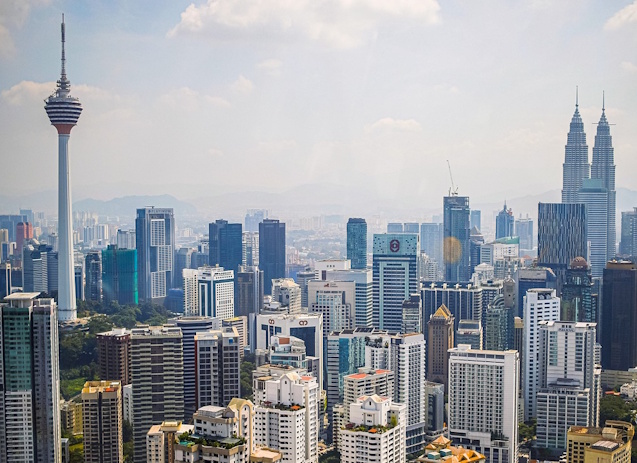Malaysia vs Indonesia: A Comprehensive Comparison
1. Introduction
Malaysia and Indonesia are two of Southeast Asia’s largest and most diverse nations, both known for their rich cultures, tropical landscapes, and growing economies. While Malaysia has a more developed infrastructure and higher living standards, Indonesia offers a larger economy, abundant natural resources, and vibrant local traditions. This comparison explores economic opportunities, lifestyle, and cultural differences between the two nations.
2. Geographical Overview
- Malaysia: Covers 330,803 km², with modern cities, rainforests, and beautiful islands. The country is divided into Peninsular Malaysia and East Malaysia (Borneo).
- Indonesia: Covers 1.91 million km², making it the largest archipelago in the world, consisting of over 17,000 islands, including Java, Sumatra, and Bali.
3. Key Comparison Table
| Factor | Malaysia | Indonesia |
|---|---|---|
| Location | Southeast Asia | Southeast Asia |
| Size (km²) | 330,803 km² | 1.91 million km² |
| Population | 34 million | 277 million |
| GDP (Nominal) | $440 billion | $1.5 trillion |
| GDP Per Capita | $12,500 | $5,200 |
| Cost of Living Index | Moderate | Low |
| Average Salary | $12,000 | $6,000 |
| Life Expectancy | 76 years | 72 years |
| Education Ranking | Higher-ranked universities | Growing education sector |
| Crime Index | Low | Moderate |
| Healthcare System | Public & Private mix | Developing healthcare system |
4. Economic Comparison
- Malaysia has a more developed economy, excelling in electronics, oil & gas, and financial services.
- Indonesia has the largest economy in Southeast Asia, driven by natural resources, agriculture, and manufacturing.
- Cost of living: Malaysia is more expensive, while Indonesia is cheaper, especially outside Jakarta and Bali.
- Job market: Malaysia offers higher salaries and job opportunities in finance, IT, and engineering, while Indonesia has more jobs in agriculture and local industries.
5. Quality of Life
- Healthcare: Malaysia has better healthcare facilities and medical tourism, while Indonesia’s healthcare system is still developing.
- Education: Malaysia has top-ranked universities, while Indonesia has a growing but less internationally recognized education system.
- Safety: Both countries are relatively safe, but Indonesia has higher petty crime rates in tourist areas.
6. Culture and Society
- Languages: Malaysia speaks Malay (Bahasa Malaysia), while Indonesia speaks Bahasa Indonesia—both languages are mutually intelligible.
- Work-Life Balance: Malaysia has a more structured work culture, while Indonesia has a mix of formal and informal industries.
- Social Attitude: Malaysia is multi-ethnic, with strong Chinese, Indian, and Malay influences, while Indonesia has a deeply rooted traditional and Islamic culture.
7. Pros and Cons
Pros of Living in Malaysia:
✅ Better infrastructure and public services
✅ Higher salaries and more job opportunities
✅ Developed healthcare system with medical tourism
Cons of Living in Malaysia:
❌ Higher cost of living compared to Indonesia
❌ Traffic congestion in Kuala Lumpur and major cities
❌ Strict visa regulations for long-term expats
Pros of Living in Indonesia:
✅ Lower cost of living, making it attractive for expats
✅ Rich cultural diversity and natural beauty
✅ Growing economy with business opportunities
Cons of Living in Indonesia:
❌ Underdeveloped healthcare system
❌ Traffic congestion, especially in Jakarta
❌ Limited infrastructure in some remote areas
8. Conclusion
Both Malaysia and Indonesia offer great opportunities for expats, businesses, and travelers. If you seek better infrastructure, healthcare, and job prospects, Malaysia is the better choice. However, if you prefer a lower cost of living, diverse cultural experiences, and a larger market for business expansion, then Indonesia is the ideal destination.

